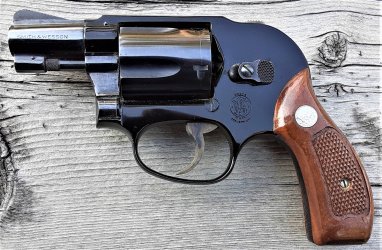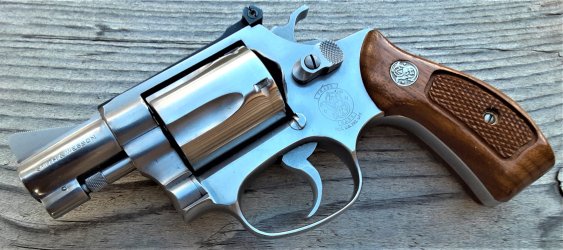Drem
Member
- Joined
- Oct 20, 2014
- Messages
- 28
- Reaction score
- 20
First what year is associated with serial number 1J074XX?
Secondly, with the cylinder closed it will not lock up 100%. Trying to rotate the cylinder counterclockwise (when looking at the hammer) it locks up on each notch. However it can be rotated clockwise with not a lot of effort. Each of the notches appear to be clean and the cylinder stop is showing just a bit of wear to the coloring. The edges are crisp.
Edited to add: Cylinder stop spring appears to be pushing it up strongly.
Edited again: The barrel is not pinned and the logo is on the left hand side.
Any advice/education would be appreciated.
Secondly, with the cylinder closed it will not lock up 100%. Trying to rotate the cylinder counterclockwise (when looking at the hammer) it locks up on each notch. However it can be rotated clockwise with not a lot of effort. Each of the notches appear to be clean and the cylinder stop is showing just a bit of wear to the coloring. The edges are crisp.
Edited to add: Cylinder stop spring appears to be pushing it up strongly.
Edited again: The barrel is not pinned and the logo is on the left hand side.
Any advice/education would be appreciated.
Last edited:


